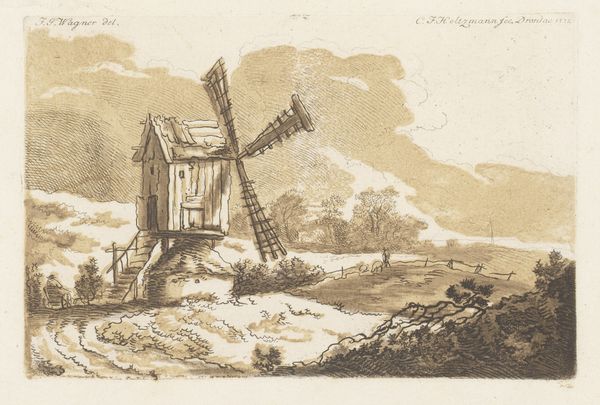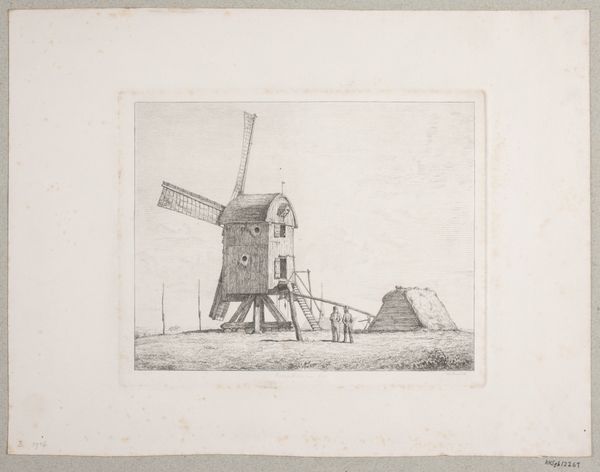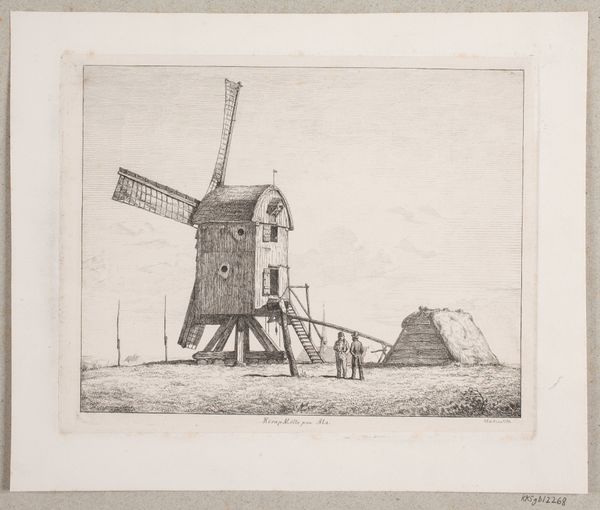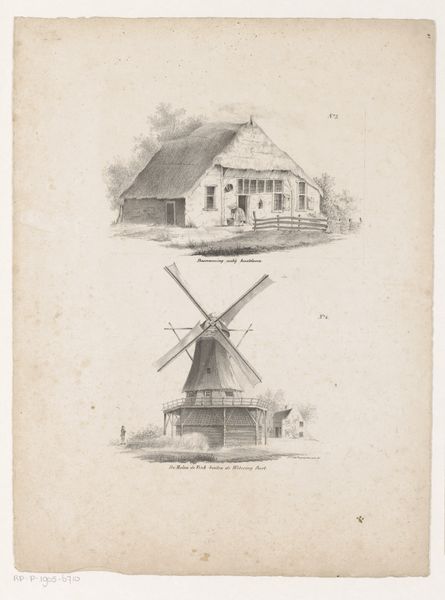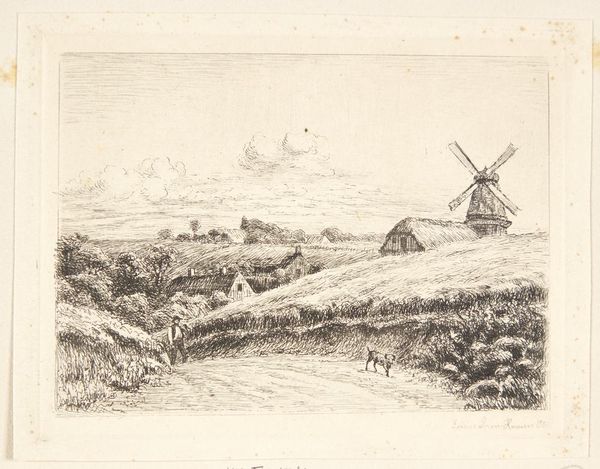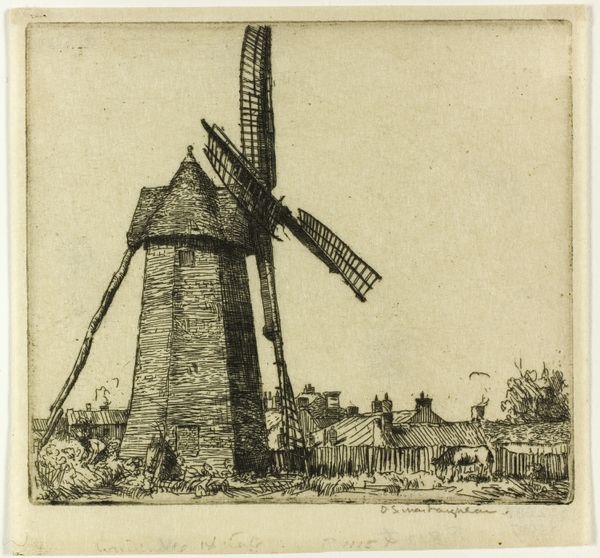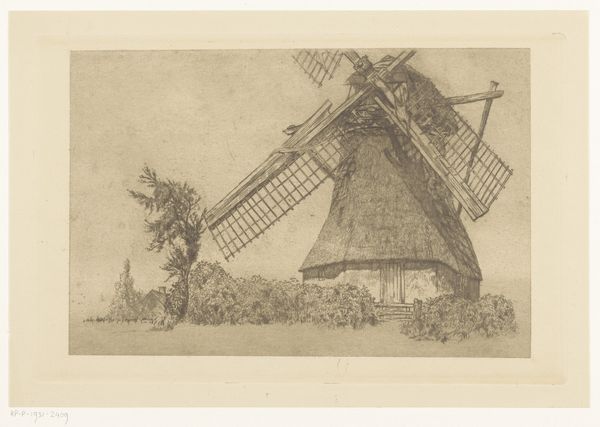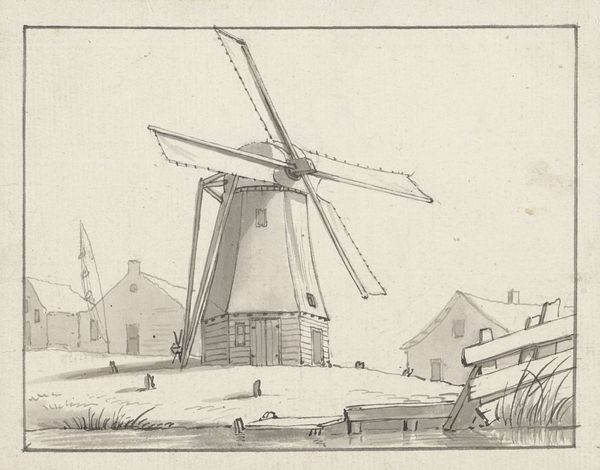
print, etching, engraving
# print
#
etching
#
landscape
#
etching
#
line
#
engraving
#
realism
Dimensions: 276 mm (height) x 221 mm (width) (plademaal)
Curator: This is "Ladegaardsmøllen ved Roskilde," or Ladegaard Mill near Roskilde, created by Henrik Steffens Sibbern in 1857. It's an etching, a detailed print showcased here at the SMK. Editor: It's surprisingly serene, isn't it? The landscape, rendered in delicate lines, has a calming effect. Like a nostalgic daydream. Curator: Indeed. The windmill itself is a potent symbol of the Danish countryside during that era. Mills were integral to the rural economy and a familiar presence in the landscape. It represents not just utility, but also a deep connection to the land. Editor: Absolutely, and the thatched texture of the mill is remarkably captured with such fine lines! I love how it contrasts with the smoother areas of the sky and the fields. It feels like Sibbern is showing us a place both familiar and romanticized, inviting us to step into this memory. Curator: Remember that in the mid-19th century, Denmark was defining its national identity, so landscape art gained immense popularity. The artist presents not just a mill, but a picture of Danish life and its dependence on resources like grain. This particular etching has the air of realist work but its picturesque setting also reflects national romanticism, a very important element during the Golden Age. Editor: I see the social-political angle, of course, but the light itself intrigues me more. Sibbern uses those intricate etched lines to imply shadow and a kind of soft glow across the entire scene, like a late afternoon or early morning. It gives the scene a wonderful stillness, a meditative feeling. Curator: What strikes me is that while seemingly quaint, this work prompts questions about the industrial age. Mills represented traditional labour, yet by 1857, industrialization was making in-roads even into agrarian societies. So, images of mills also invoke changing technologies. Editor: True! Looking at it again with that in mind, I detect a hint of melancholy mixed with the calm. Perhaps a subtle awareness of what's fading away? Curator: Perhaps. It reveals, I think, how the image carries layers of cultural understanding that shape perception. It's about Denmark then, but resonates even now with changing ideas about the landscape. Editor: Ultimately, Sibbern offers an image brimming with texture and history, proving how even the simplest subject can offer profound insight, reminding us that what we see is as much about us as it is about what is in front of us.
Comments
No comments
Be the first to comment and join the conversation on the ultimate creative platform.

